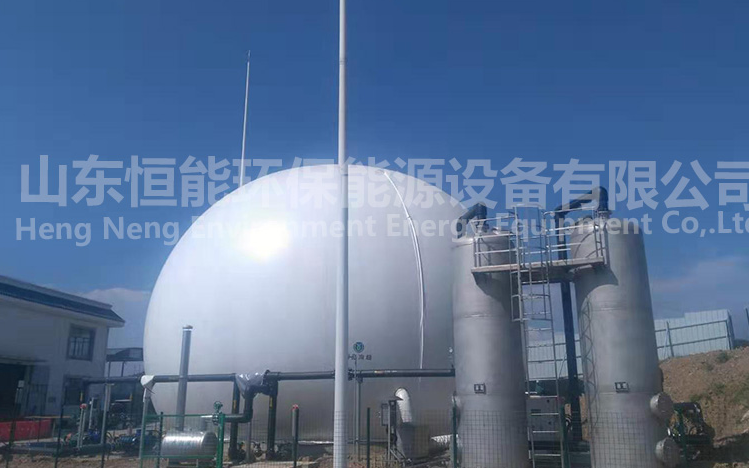歡迎進(jìn)入山東恒能環(huán)保能源設(shè)備有限公司
歡迎進(jìn)入山東恒能環(huán)保能源設(shè)備有限公司
燒結(jié)機(jī)煙氣脫硝是鋼鐵廠環(huán)保治理中的重要環(huán)節(jié),其主要目的是通過(guò)技術(shù)手段將煙氣中的氮氧化物(NOx)轉(zhuǎn)化為無(wú)害的氮?dú)夂退瑥亩鴾p少對(duì)環(huán)境的污染。可以總結(jié)出幾種常見的燒結(jié)機(jī)煙氣脫硝工藝及其特點(diǎn):
Denitrification of sintering machine flue gas is an important part of environmental protection management in steel plants. Its main purpose is to convert nitrogen oxides (NOx) in flue gas into harmless nitrogen and water through technical means, thereby reducing environmental pollution. Several common sintering machine flue gas denitrification processes and their characteristics can be summarized:
選擇性催化還原法(SCR):
Selective Catalytic Reduction (SCR) method:
適用范圍:廣泛應(yīng)用于鋼鐵燒結(jié)煙氣治理。
Scope of application: Widely used in the treatment of steel sintering flue gas.
技術(shù)原理:在催化劑的作用下,利用氨或尿素等還原劑與煙氣中的NOx反應(yīng)生成氮?dú)夂退?/p>
Technical principle: Under the action of a catalyst, reducing agents such as ammonia or urea react with NOx in the flue gas to generate nitrogen and water.
優(yōu)點(diǎn):處理效率高、運(yùn)行穩(wěn)定、投資和運(yùn)行成本較低。
Advantages: High processing efficiency, stable operation, low investment and operating costs.
缺點(diǎn):需要較高的初始投資和運(yùn)行能耗,特別是在燒結(jié)煙氣溫度較低的情況下,需進(jìn)行煙氣再熱。
Disadvantages: High initial investment and operating energy consumption are required, especially in the case of low sintering flue gas temperature, which requires flue gas reheating.
低溫SCR脫硝技術(shù):
Low temperature SCR denitrification technology:
適用范圍:適用于燒結(jié)煙氣流量大、溫度低的情況。
Scope of application: Suitable for situations where the sintering flue gas flow rate is high and the temperature is low.
技術(shù)原理:采用低溫催化劑,在較低溫度下進(jìn)行脫硝反應(yīng)。
Technical principle: Low temperature catalyst is used to carry out denitrification reaction at a lower temperature.
優(yōu)點(diǎn):降低了設(shè)備的能耗,減少了設(shè)備占地面積。
Advantages: It reduces the energy consumption of the equipment and reduces the footprint of the equipment.
缺點(diǎn):需要特定的低溫催化劑,并且對(duì)煙氣溫度有嚴(yán)格要求。
Disadvantages: Specific low-temperature catalysts are required, and there are strict requirements for flue gas temperature.
活性炭脫硝技術(shù):
Activated carbon denitrification technology:
適用范圍:適用于燒結(jié)機(jī)頭煙氣脫硝。
Scope of application: Suitable for flue gas denitrification in sintering machine heads.
技術(shù)原理:利用活性炭吸附和還原NOx。
Technical principle: Utilizing activated carbon to adsorb and reduce NOx.
優(yōu)點(diǎn):具有資源化利用的優(yōu)勢(shì),節(jié)水、脫硫、脫硝、除塵及除去其他微量有害成分。

Advantages: It has the advantage of resource utilization, water conservation, desulfurization, denitrification, dust removal, and removal of other trace harmful components.
缺點(diǎn):需要定期更換活性炭,增加運(yùn)行成本。
Disadvantage: Regular replacement of activated carbon is required, which increases operating costs.
濕法脫硝技術(shù):
Wet process denitrification technology:
適用范圍:適用于燒結(jié)廢氣超低排放治理。
Scope of application: Suitable for ultra-low emission control of sintering waste gas.
技術(shù)原理:通過(guò)堿液吸收法、酸吸收法等進(jìn)行脫硝。
Technical principle: Denitrification is carried out through alkali absorption method, acid absorption method, etc.
優(yōu)點(diǎn):可以實(shí)現(xiàn)超低排放標(biāo)準(zhǔn)。
Advantages: It can achieve ultra-low emission standards.
缺點(diǎn):需要復(fù)雜的系統(tǒng)設(shè)計(jì)和較高的運(yùn)行成本。
Disadvantages: Requires complex system design and high operating costs.
COA協(xié)同脫硝技術(shù):
COA collaborative denitrification technology:
適用范圍:適用于燒結(jié)球團(tuán)行業(yè)NOx排放指標(biāo)較高的情況。
Scope of application: Suitable for situations where the NOx emission index is high in the sintered ball industry.
技術(shù)原理:結(jié)合COA(碳氧化物)和其他脫硝技術(shù)進(jìn)行協(xié)同處理。
Technical principle: Combining COA (carbon oxides) and other denitrification technologies for synergistic treatment.
優(yōu)點(diǎn):提高了脫硝效率,降低了整體排放水平。
Advantages: Improved denitrification efficiency and reduced overall emission levels.
綜合來(lái)看,不同脫硝技術(shù)各有優(yōu)缺點(diǎn),具體選擇應(yīng)根據(jù)實(shí)際工況和環(huán)保要求來(lái)決定。例如,對(duì)于燒結(jié)煙氣溫度較低的情況,可以優(yōu)先考慮低溫SCR脫硝技術(shù);而對(duì)于需要超低排放的場(chǎng)合,則可能需要采用濕法脫硝或COA協(xié)同脫硝技術(shù)。此外,還可以結(jié)合多種技術(shù)進(jìn)行綜合治理,以達(dá)到最佳的環(huán)保效果。
Overall, different denitrification technologies have their own advantages and disadvantages, and the specific selection should be determined based on actual working conditions and environmental requirements. For example, in the case of low sintering flue gas temperature, low-temperature SCR denitrification technology can be given priority consideration; For occasions that require ultra-low emissions, wet denitrification or COA synergistic denitrification technology may be necessary. In addition, various technologies can be combined for comprehensive management to achieve the best environmental protection effect.
相關(guān)新聞